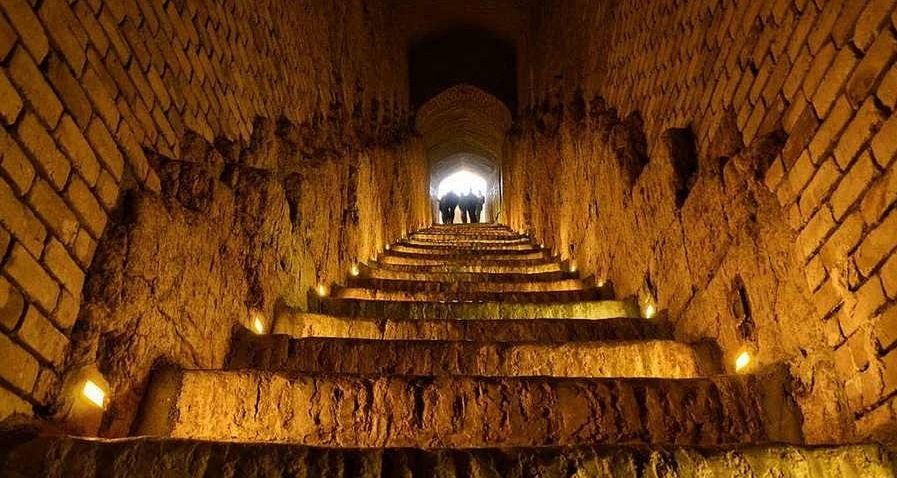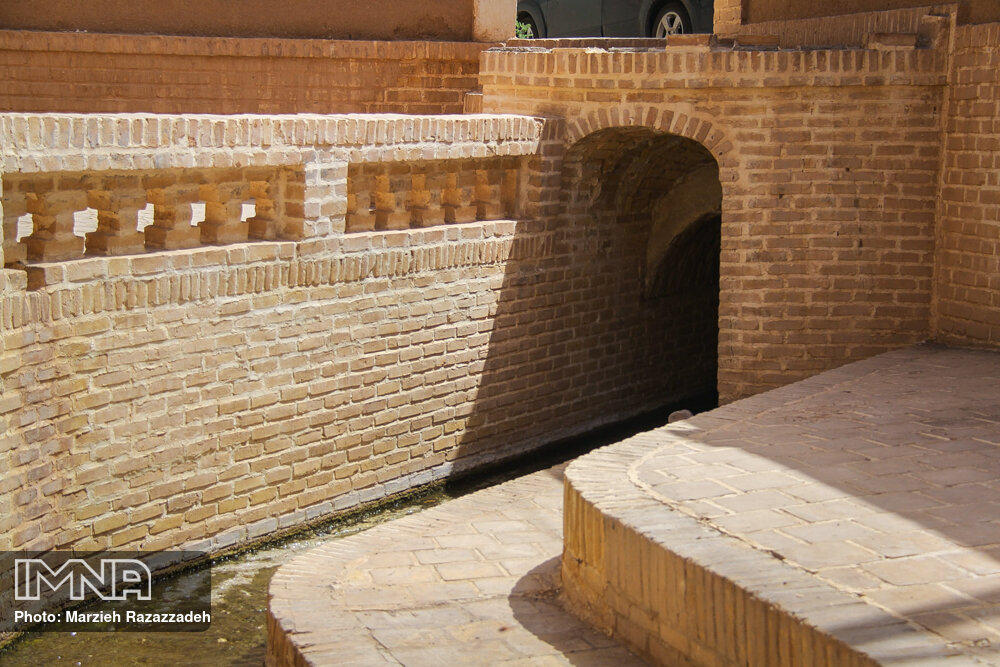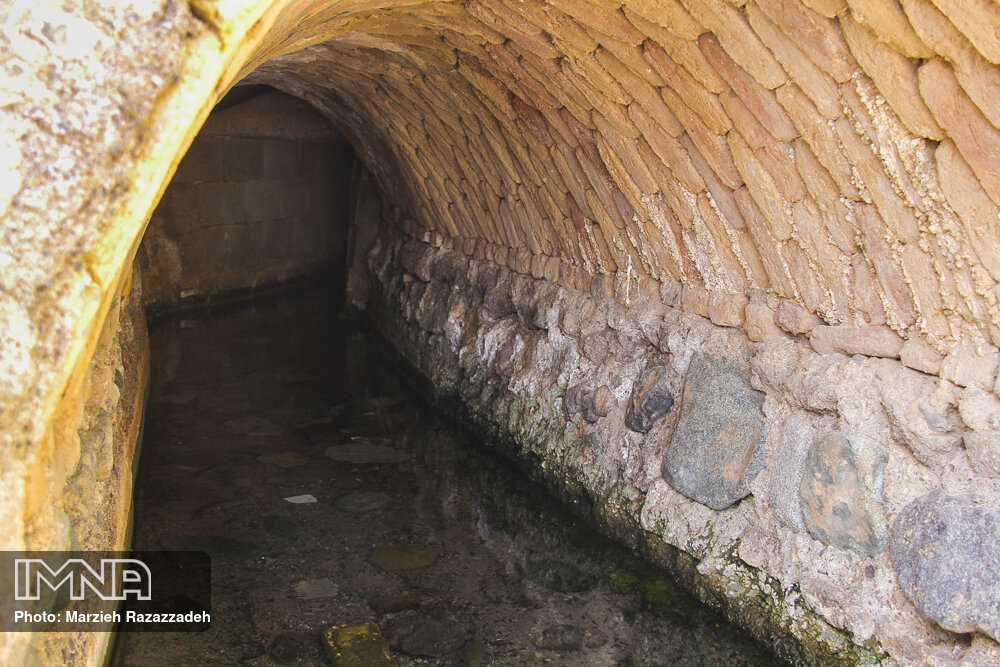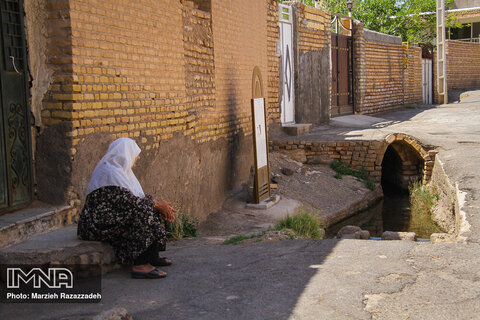Iran (IMNA) - The term kārēz also is commonly used for underground water channels in Central Asia, Afghanistan, India, and China, and became a loanword in Russian (kyarez) because of its use in the Turkic languages of Central Asia. In southern Kazakhstan (Deom and Sala), kārēz is used for artesian well systems, which harness the natural upward pressure of the groundwater, but these wells have nothing in common with drainage channels. The term kārēz was further spread because it was adopted as a technical term by Russian and British administrators. Kārēz is occasionally used in the western part of the Islamic lands, particularly in western Arabia as far as the region of Jedda, where its use attests to Iranian cultural influence, dating probably from the great Arab-Iranian cultural synthesis of the ʿAbbasid caliphate.

In central and western Iran, the Arabic word qanāt (pl. qanāthā, or less commonly qanawāt) was naturalized in connection with the spread of Arabic which followed the Islamic conquest of the 7th century CE. The term may go back to use in the Near East well before the Persian conquest in the 6th century BCE. Qanāt and the related noun moqanni (“canal worker,” 3rd pers. sing. m. active participle of qannā “to dig a canal”) are nowadays well established in the official Persian-language literature and administrative records of contemporary Iran. But originally, as well as today, the term specifically refers to all types of open-air water channel.
In the Arab lands, irrigation terminology is particularly fluid, and a number of regional and local terms are used in addition to kārēz in western Arabia. In the Syrian desert, qanāt refers to underground water channels (Kobori, 1980), while in Oman falaj (pl. aflāj; lit. “crack, crevice”), in Hadramaut miʾyān (cf. māʾ/miāʾ “water”), in Yemen ḡayl (pl. ḡoyūl, aḡyāl), and in Hejaz ḵayf (pl. ḵyof) are used. The term foggara (pl. fegāgir; cf. Ar. fajara-hū “to create a passage for something, to let something flow”) is known nearly everywhere in the Algerian Sahara, although bongbini (pl. bongbiniu) and ḵaṭṭāra (pl. ḵaṭāṭer) are more common in Tabelbala and Morocco, respectively.

The use of the term qanāt has spread eastward and is now also found in regions in which kārēz used to be the dominant term for underground water channels. Daniel Balland (1992b, pp. 97-100) has carefully analyzed and mapped the phenomenon in Afghanistan, where he found 94 toponyms formed with qanāt and 340 formed with kārēz. While qanāt has an advantageous literary connotation among Afghan functionaries, most of whom are native speakers of Persian, the term is used as much in the Pashto linguistic sphere as in the Persian-speaking areas of western Afghanistan. Toponyms with qanāt are particularly numerous in the region of Kandahar (Qandahār) and in the west around Herat, up to Farāh in the south, although isolated examples occur as far southeast as the neighborhood of Ḡazni and to the south of Kabul. This distribution illustrates that the introduction of the term has been the result of an acculturation whose foci were the great cities Herat and Kandahar, since they belonged to the cultural and political sphere of Iranian influence until the 19th century. In contrast, in the Afghan east around Kabul, which was always more oriented towards India, the introduction of the word qanāt has met with resistance. This weakness of the Iranian influence is illustrated by the absence of toponyms with qanāt in the area between the Farāhrud and the Helmand River. Afghan administrators continue to actively support the use of the term qanāt, notably on topographic maps and in the fiscal registers as far southeast as the province of Ḡazni. Yet the farmers of the region only use the term kārēz.

In the international scientific literature, the term qanāt remains widely predominant, although some authors, such as Mansur Seyyed Sajjadi, G. B. Cressey, and Johannes Humlum, use kārēz alone or concurrently with qanāt. Francophone authors such as A. Cornet, Iwao Kobori, and Jean Bisson use the term foggara for the Sahara. Noteworthy is that older francophone authors such as Richard Thoumin (b. 1897) and Jacques Weulersse (1905-46) employed foggara for the Syrian Levant, where the population did not use the term at all.
Iranica


Your Comment